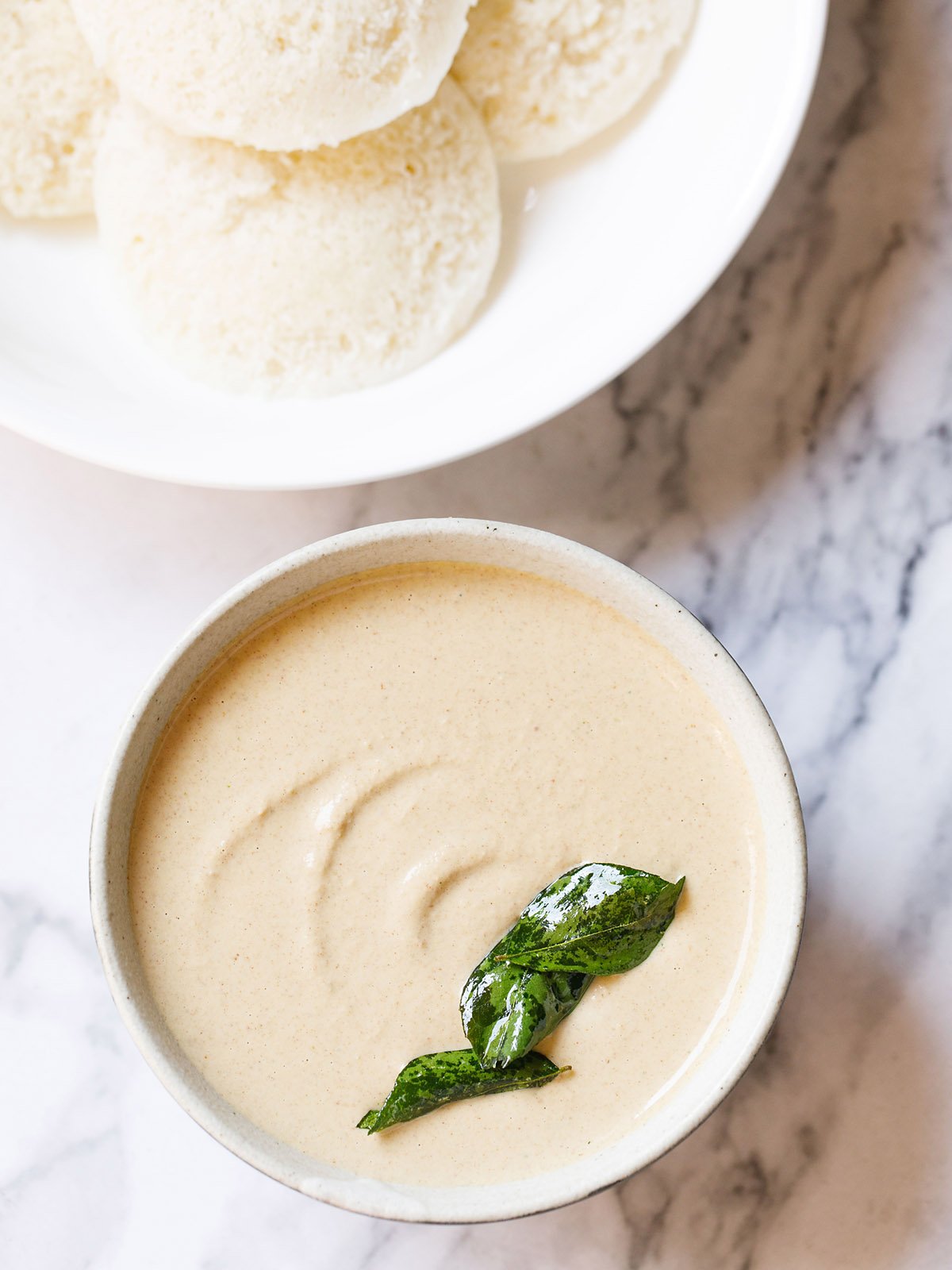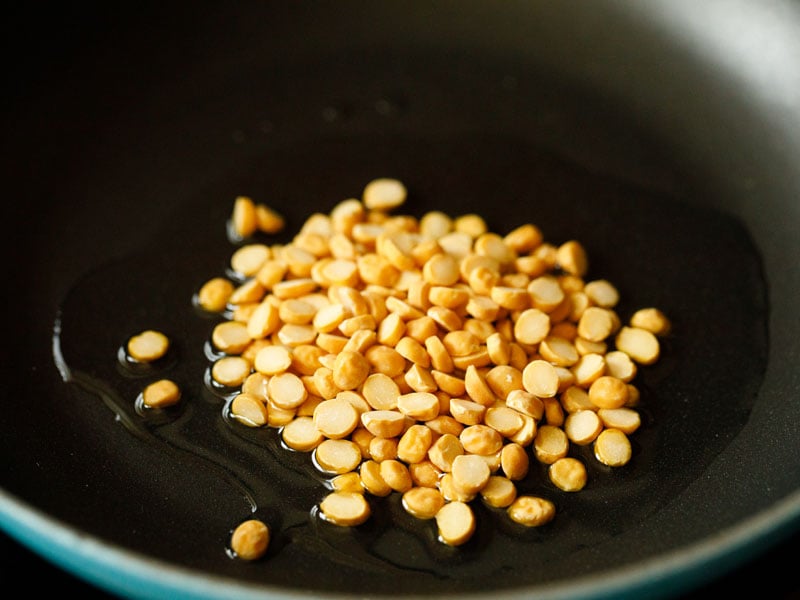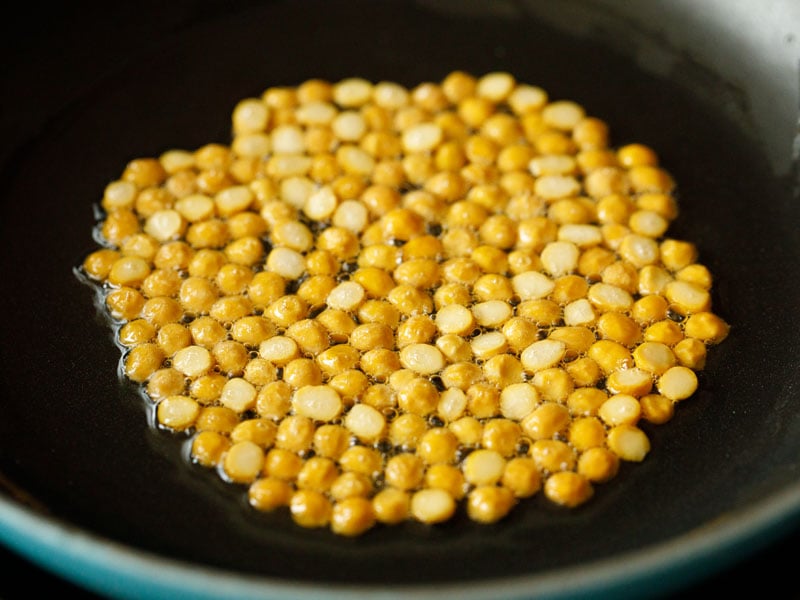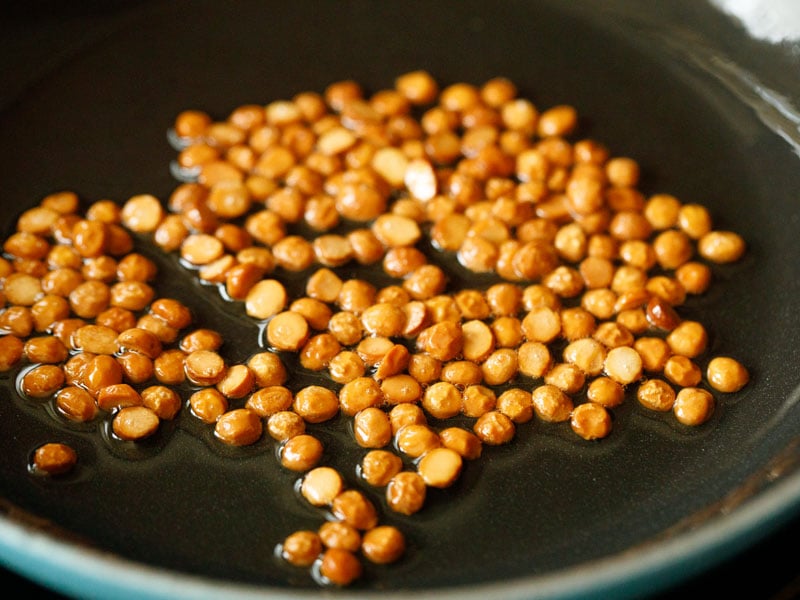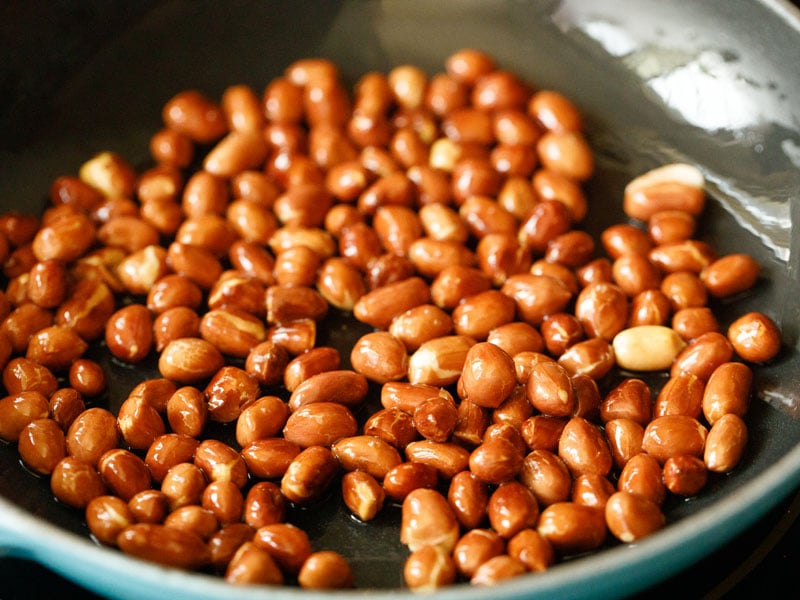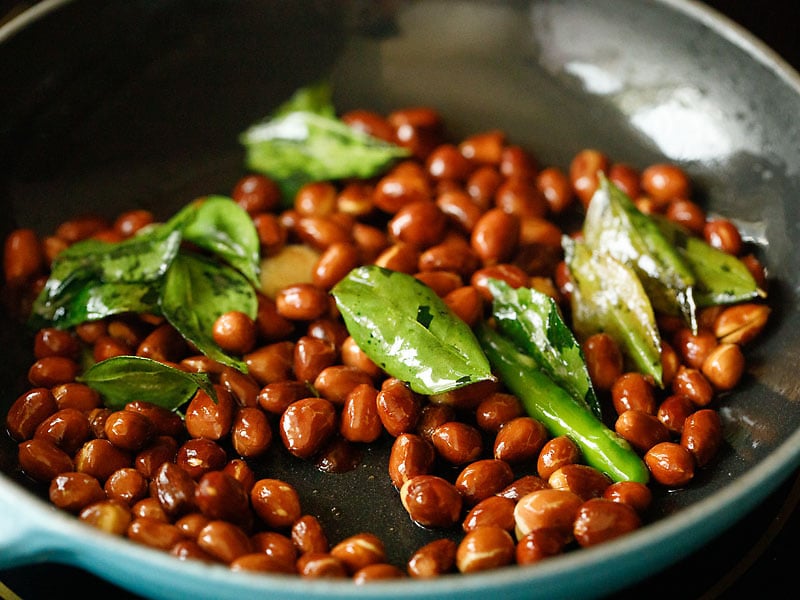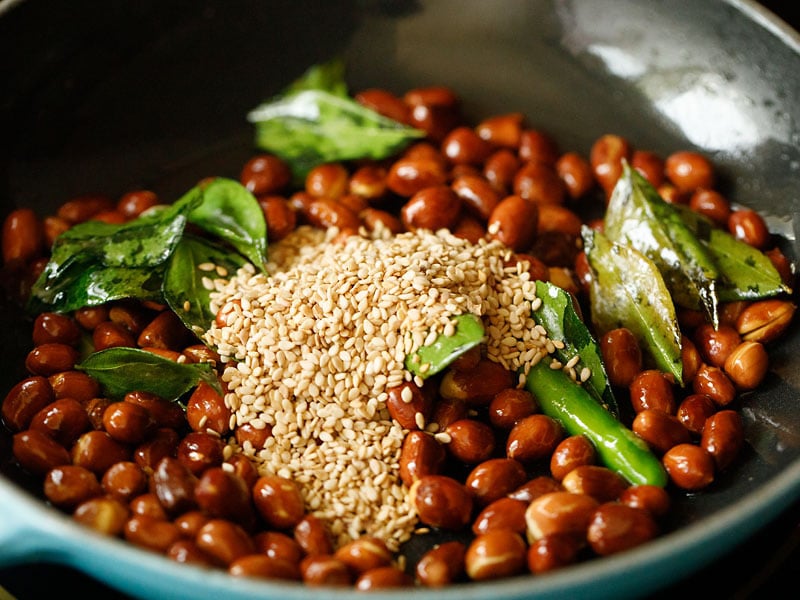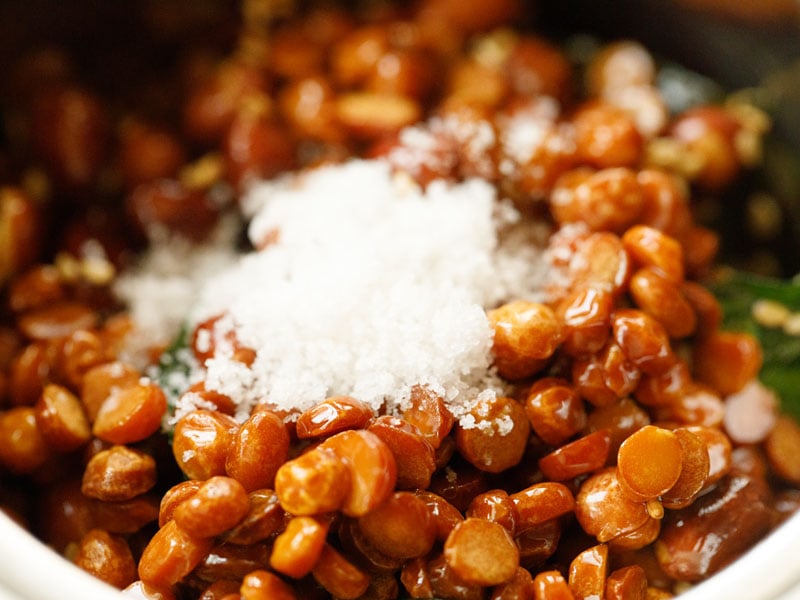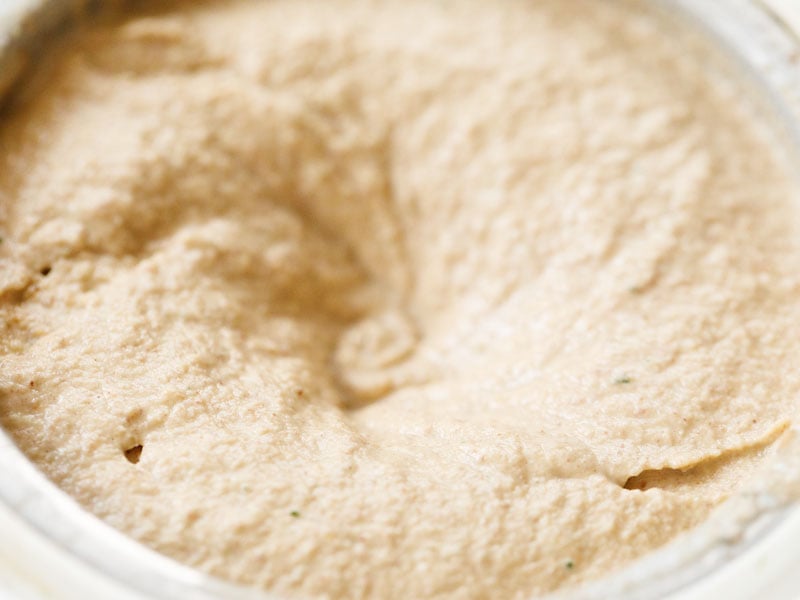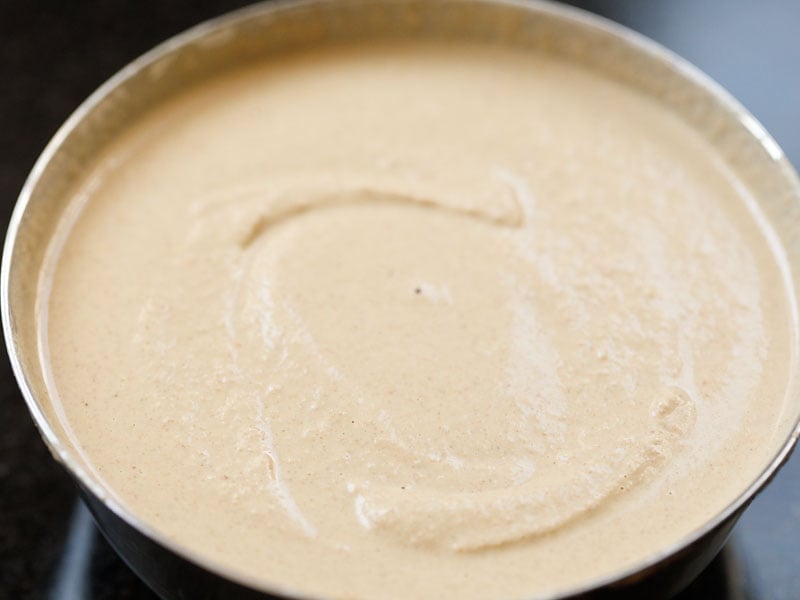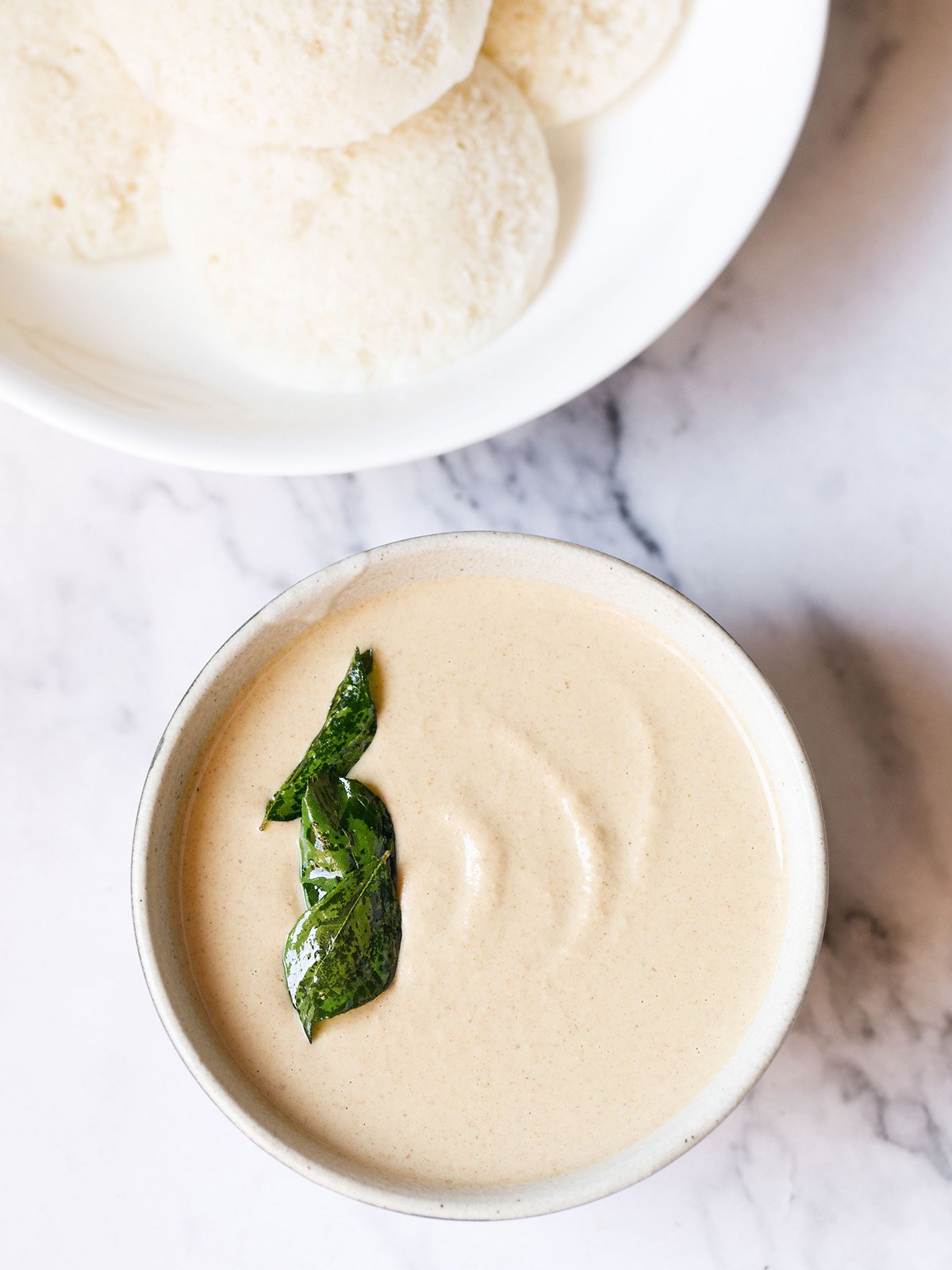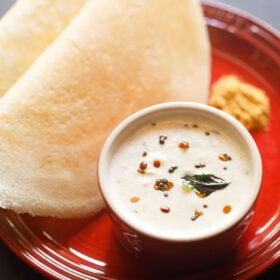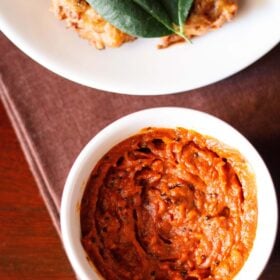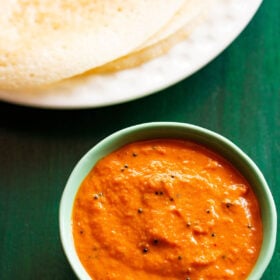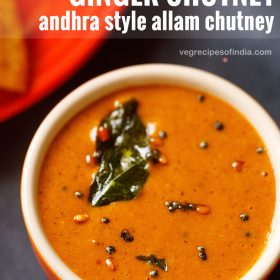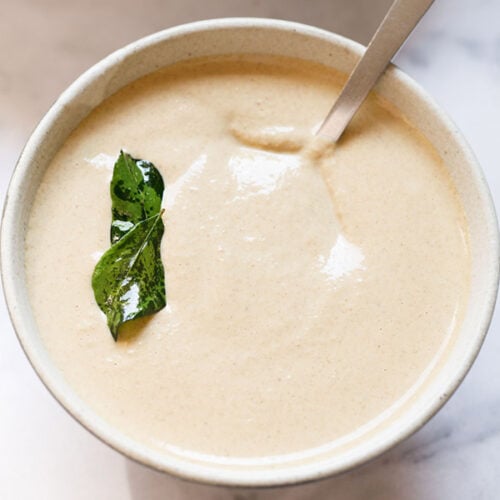About Peanut Chutney
So like me how many of you like peanuts? It is a wonderful ingredient to work with. Some Indian curries made with peanuts taste simply delish. They not only add a ton of flavor but also help in thickening these curries. Peanuts are also known as groundnuts. If you love peanuts, you will go gaga over this South Indian recipe of peanut chutney. It is so good. This groundnut chutney recipe is also called Palli Chutney in the Andhra and Telangana regions of South India. The sweet, nutty flavors of peanuts are perfectly balanced with the spice, heat of green chilies, and the umami flavor of chana dal. Make it and thank me later. You have to try this peanut chutney to know how awesome and fabulous it is. Making peanut chutney is a breeze and my recipe will fit your needs if you do not have handy coconut – fresh, frozen, or desiccated. My newly updated recipe is easier, as you can simply make it with raw chana dal without having to use roasted chana dal. I also include some white sesame seeds. Peanuts, chana dal, and sesame seeds – a healthy trio, isn’t it? So this is a healthy chutney recipe for you. You know, many times I have both fresh coconut and desiccated coconut in my kitchen. But there are occasions when there is no trace of any coconut in the pantry. We generally have a typical Indian breakfast in the mornings. Either it is idli or dosa or poha or paratha. So when I make idli or dosa, I have to make some chutney – right? On such occasions, I make this quick peanut chutney. And what if there are no peanuts or coconut? Then I make Tomato Chutney. Unlike coconut chutney, this groundnut chutney won’t become spoiled or rancid if you include it in a lunchbox or keep it out for a longer duration at room temperature. Groundnut chutney is excellent during winters due to the nature of peanuts being heaty.
How to make Peanut Chutney
Fry Chana Dal
- Heat 1 tablespoon oil in a pan. Keep the heat to low and add 2 tablespoons chana dal (20 grams). Chana dal is husked and halved baby brown chickpeas. They are also called bengal gram. For the oil you can use sunflower, peanut, canola, rice bran, safflower, avocado, or grapeseed oil.
- Spread them evenly on the pan with each lentil being in direct contact with the pan.
- Stirring often fry the lentils until they turn golden. Fry them at low heat, so that they do not burn. Remember to fry them thoroughly as you do not want them to be even a bit raw.
- Remove with a slotted spoon and set the fried lentils aside.
Roast Peanuts
- To the same oil, add ½ cup peanuts (80 grams).
- Mix them with the oil and start roasting them on low heat.
- Stirring at intervals roast them until they change color and you see their fragile papery skins having fine cracks. You will also hear their sputtering sound. Roasting them takes 4 to 5 minutes on low to medium-low heat. Taste a few and they should have a crunchy and crisp texture.
- Now add 10 to 12 curry leaves (medium to large-sized), 2 green chillies, 2 garlic cloves (small to medium), and 1 pinch asafetida (hing). Tip: Green chilies bring a great deal of flavor and some heat to the recipe. They help to balance the sweetness from the peanuts. Depending on the type of green chilies you have, you can add 2 to 3 chilies or even 4 of them. If you have spicy Indian green chilies, then add 1 or 2. If you have less spicy green chilies, then add 3 or 4. You can also add 2 to 3 dry red chilies in place of the green chilies.
- Sauté for a minute or until the curry leaves become crisp.
- Add 1 tablespoon sesame seeds (10 grams).
- Mix and switch off the heat. Set aside the pan so that the groundnut chutney ingredients to cool at room temperature.
Make Peanut Chutney
- When the groundnut chutney ingredients have become warm or cooled, place them in a blender or a mixer-grinder. Add the fried chana dal and salt as per taste. Tip: I would suggest beginning with ½ teaspoon salt when blending. Then add a few pinches as you blend doing the taste test.
- Add water in parts and begin to blend. Tip: I have added ¾ cup water which gives a medium-thick consistency. For a thicker groundnut chutney, add ½ cup water. You can adjust the consistency by adding less or more water, but do not make the consistency runny or thin.
- Blend to a smooth and fine consistency. Transfer all of the peanut chutney in a bowl. Now if you want you can further temper groundnut chutney. But you don’t need to as the peanut chutney tastes awesome the way it is.
Serving Suggestions
Idli, Dosa: My peanut chutney recipe tastes too good with the South Indian breakfast of idli, dosa and makes for a super healthy meal. It also pairs well with medu vada, rava idli, rava dosa, and upma. Pakora: When I do not have coriander leaves handy to make Coriander Chutney, I prepare this groundnut chutney to serve with the various kinds of pakora – onion pakoda, bread pakoda, or potato pakora. Paniyaram or Appe: Pairs wonderfully with these fluffy and soft steamed dumplings made with rice and lentils batter. Rice: This chutney pairs deliciously as a side condiment with some steamed rice.
Bread: Slather on a bread (toasted or plain) for a quick snack or breakfast option.
Storage
I make this peanut chutney and refrigerate it. It stays good for 2 to 3 days. Whenever I make light snacks I serve this chutney with them or with the family favorite – idli and dosa. Store your peanut chutney in an air-tight container. Refrigerate and use whenever required within 2 to 3 days.
Expert Tips
Peanuts: To make groundnut chutney, always use fresh dry peanuts. Do not use peanuts that have gone rancid. You can also try to make groundnut chutney with roasted unsalted peanuts. Simply roast them lightly in the oil and then follow the remaining steps in the recipe. Chana dal: These yellow lentils are husked and split bengal gram or baby brown chickpeas. If you have roasted chana dal, you can add ¼ cup when you add the sesame seeds. Consistency: You can make the groundnut chutney thick or medium, by adding less or more water. Variations: If you are looking to make this groundnut chutney more flavorful by adding coconut or curd or doing a tempering, then there is no need. It tastes great on its own. But still, if you prefer to temper peanut chutney, you can do so. But I never felt the need to do this.
Please be sure to rate the recipe in the recipe card or leave a comment below if you have made it. For more vegetarian inspirations, Sign Up for my emails or follow me on Instagram, Youtube, Facebook, Pinterest or Twitter. Classic Coconut Chutney & Hotel Style Coconut Chutney (2 Ways) Tomato Chutney Recipe (2 South Indian Variations) Quick Onion Chutney Recipe | Vengaya Chutney Allam Pachadi | Ginger Chutney | Allam Chutney This Peanut Chutney recipe from the archives first published on Feb 2013 has been republished and updated on January 2023.
